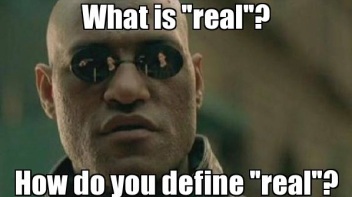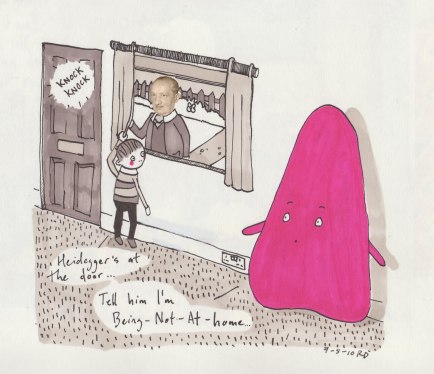In the course of the paper, I would like to contemplate ethical theories regarding their commonalities and differences in order to search for the sake of goodness and I will claim that one among others, namely virtue ethics, is more favourable in my view. Since this is a great task to manage with the all aspects of the issue, I would like to state some crucial points I consider as the backbone of the virtue ethics even in its contemporary versions. I would want to pay attention the strong and weak points of ethical theories by examining a practical case of abortion, and I aim to devote virtue ethics by favouring its special emphasis about one’s character.
In order to pursue a more accurate study in this paper, starting with the general definitions and the differences of the ethical theories I will mention through the paper would be proper as an introduction. Here, I do not any harm to get the most out of the article of Rosalind Hursthouse who is also trying to compare utilitarianism and deontology with virtue ethics in order to show that virtue ethics is also a strong contemporary moral theory as much as others. According to utilitarianism, the right action is considered in terms of its consequences and if it maximizes happiness for all the parties included, then it is right. On the other hand, deontology it definitely not interested in the consequences of your actions because the crucial thing in the right action is its accordance with the moral rules. These two are normative ethical theories which mean that they aim to answer the question “What ought I do?”, in other words they are rule based theories. Roughly, the virtue ethics is defined based on virtues not on mere rules contrary to formers. It emphasis the question “What ought I be like?” which is a character based moral question, thus it is not only centered around the right action, but also it is centered the virtuous actions what are the virtuous person would do in the same circumstances.
Could the difference between these theories I have mentioned above cause an underestimation for virtue ethics? According to Rosalind Hursthouse, falsely the virtue ethics is not taken into account as a normative theory as a rival to others but this is a misconception about virtue ethics’ inability to say us what to do. Thus, she tries to defend virtue theory against this objection. On the other hand, I dare to claim that maybe there is no need for virtue ethics to be taken as a normative ethical theory, because in my view this would be an underestimation; let me briefly explain why.
I think there is an obvious difficulty in the virtue ethics compared to the others, because the ethical theories which tell the guidance as saying “Do not lie” or “Do maximize happiness for overall” seem more direct, even though not easy all the time, but “Do act in accordance with the virtue that a virtuous person would have” is a complicated and thoughtful one for a person to count it in the decision process. With a broad brush approach, one can ask that “But being good or doing the right thing is really that easy to get by adopting the right prescription like taking the correct pill?”. I would have known easily what is the act to maximize overall happiness in a situation but I could not be able to decide doing the virtuous act that easily. Let’s argue about this question by practising upon the case of abortion.
Since there are many factors included in the case of abortion, it is always debatable in the fields of philosophy, politics and sociology. Thus, what is the wrongness of abortion is totally the topic of a different paper, but it can be useful for my purpose which aims to see the richness of virtue ethics as a catch-all term rather than pointing a normative theory. Let’s say there is a successful woman in her profession, and she has a strict plan about her personal life and career. She thinks that in three years everything will be stabile in her life and that is a good time to have a baby. Then she gets pregnant and through the end of the ninth month the news pops up and she is informed that she gets promotion, now she is the boss. It is the chance of her life and she has always hoped that one day she will be in this position, and she thinks that ceasing the pregnancy is the best solution. Now, is there anything morally wrong with this decision? What could be the possible reactions coming from different views to this action?
From the viewpoint of a deontologist, the moral rules to adopt can be some of these “Do not kill/ Do not kill the innocent/ Do not override your rights for the unborn’s rights/ Do not sacrifice your rights for others”. One can think that one of these rights is the correct moral principle to adopt, here I want to draw your attention to the point that I am not in the position to decide which one is the correct moral rule, and then she goes for it. Regardless of the consequences, if she acts in accordance with the correct rule than it can be easily said that her action is right.
What about the issue comes to the consideration of the consequences of this action? Let’s interrogate few of them. It is obvious that she will be more happy if she will be the boss rather than giving up it for a baby, and if she is really good at her job it is better off for other workers at the company, but what about the unborn? It is easy to scream that out: “It is a nine-month unborn you try to kill!” A utilitarian may have trouble while justifying the situation, because if it is justifiable then it is possible to justify another case in which the woman is informed one day after giving birth to this baby. Would it be also justified for a newborn baby? Peter Singer who is one of the most well known utilitarians uses the word “person” in order to refer a being who is capable of anticipating the future and even for the newborns that is what he states: “I think that it is generally a greater wrong to kill such a being than it is to kill a being that has no sense of existing over time. Newborn human babies have no sense of their own existence over time. So killing a newborn baby is never equivalent to killing a person, that is, a being who wants to go on living. That doesn’t mean that it is not almost always a terrible thing to do. It is, but that is because most infants are loved and cherished by their parents, and to kill an infant is usually to do a great wrong to its parents.” As we can see here, a utilitarian can justify the situation of a newborn through its parents and again through overall happiness as a consequence of one’s action.
In order to go back my point to discuss this issue, I can say that sometimes where the utilitarians have trouble about an action like the later abortions or moral standing of a newborn and where a deontologist having trouble with some cases like claiming that even if your friend or spouse is at the stake you do not lie on the behalf of her, they still can come up with a sharper prescriptions rather than virtue ethics. This is the point exactly what I am interested in. Virtue ethics is even claimed as vague about some issues, especially when the practical things are concerned, but I think the reason is not because of its inability to say us what to do, but because of its deeper aspect which is penetrated in life by regarding the character trait as its ground to flourish moral goodness.
Now, there is a need to consider virtue ethics in the case of abortion and to decide the right action which would be done by virtuous person if he/she was in the shoes of this women in the example? Here, two possible problems/objections can arise and first of them is the simpler one which is questioning the position of the virtue ethics. If the right thing to do is based on the criterion that is a virtuous person’s behaviour in this kind of a situation shows that a virtuous person is the one who acts in accordance with the correct moral rules, then does not this bring us back the position of the deontology? Then virtue ethics is an empty concept, and fundamentally it is nothing more than deontology. However it is not choosing the correct rule for moral goodness, virtue ethics is completely differentiated from deontology by claiming that virtuous person is also the one who exercises the virtues as a character trait. And this is the way to lead a morally good life, since acting merely rational is not enough for one to pursue happiness which is the highest good according to Aristotle. The highest good, namely happiness is what we all seek because it is desired for its own sake. Later on, I will present my view about virtue ethics as a thing which is pursued for its own sake and I will put more emphasis on this idea to differentiate it from other ethical theories. But now, let’s continue with the second possible objection against virtue ethics while one is in the situation to decide what to do.
 How realistic it is to act virtuously without knowing that whether I am a virtuous person or not? Most probably I am not the best virtuous person in the world and how can I know what a virtuous person would do in my situation, because if I would know then I would be virtuous. So, this seems very puzzled for oneself . There is a sort of answer coming from virtue ethicists about asking for help or advice from a more virtuous person than you and it is a reasonable suggestion to follow. But imagine that you are by yourself, in a position pushing you to behave in a certain way, most probably the one of these which will manifest your morality according to your action, you have nobody and no time to ask, how do you act? Would you first consider the consequences before you act? Or would you rationally seek for the right thing to do based on its strong morality? Here, we are starting to close the heart of the issue. While deontologists and utilitarians treat like we are always and all the time rational beings who act in accordance with our thoughts, there is the actual essential thing reveals itself, I mean our character. Let’s imagine that you are somewhere along the line to make a moral decision, if you are aware of it, there is usually a pressure because of your responsibilities, your character, or consequences. If you act in accordance with your character which was constituted by practising a virtue, when it becomes a habit like a reflex and you would not have to think about it, it comes easily.
How realistic it is to act virtuously without knowing that whether I am a virtuous person or not? Most probably I am not the best virtuous person in the world and how can I know what a virtuous person would do in my situation, because if I would know then I would be virtuous. So, this seems very puzzled for oneself . There is a sort of answer coming from virtue ethicists about asking for help or advice from a more virtuous person than you and it is a reasonable suggestion to follow. But imagine that you are by yourself, in a position pushing you to behave in a certain way, most probably the one of these which will manifest your morality according to your action, you have nobody and no time to ask, how do you act? Would you first consider the consequences before you act? Or would you rationally seek for the right thing to do based on its strong morality? Here, we are starting to close the heart of the issue. While deontologists and utilitarians treat like we are always and all the time rational beings who act in accordance with our thoughts, there is the actual essential thing reveals itself, I mean our character. Let’s imagine that you are somewhere along the line to make a moral decision, if you are aware of it, there is usually a pressure because of your responsibilities, your character, or consequences. If you act in accordance with your character which was constituted by practising a virtue, when it becomes a habit like a reflex and you would not have to think about it, it comes easily.
I would like to spend more time on this issue in order to be clear before I move on to state my own opinions about how would we know to act as a virtuous person if we are not one. Aren’t you ever freaked out or panicked? Do you really admit that you decide rationally while you are acting in these cases? Imagine that there is an ongoing crazy situation where you have to choose between two things, you would want to scream and say “I do not know what to do”. It is not the time to calculate to maximize overall happiness or to think the correct moral rule whatever it is. But, then do we choose randomly even if we have to take the responsibility of our decision after all the things are settled down? I do not think so, if it was that random, then how could we charge the people even if they were in an urgent situation. If you have experienced this kind of a situation you would have heard this advice from yourself or from others: Listen your heart, your intuition; it tells you the right thing to do. Now, I have to say that here I do not give credit to karma, or to personal development idioms. What I say is something much more serious, here I am talking about what makes you you, what is your character. Who can dare to say that character is just totality of your correct or wrong calculations, or your character is a programmed rational machine in order to select the right and wrong moral rule among many? I will step forward and claim that I believe character is way more than this. If it is who you are then at some point it is not just your rational thinking ability, but it is your feelings, your reactions, your actions.
Then “Listen your heart” is not a cliche in that sense, it reminds us the very nature of our rooted virtues; how you act, ipso facto, shows your character. Here one can rightly raise an objection about my claim and say that this assumption again takes a virtuous character as given and thus this advice about following our actions which stem from our character collapses back into an inferior step where we do not know how act morally if we do not have already a virtuous character. However, what I put emphasize here was not the character which has already become a certain state with full of virtues, rather I would want to take an immature character into account. It is even better for this kind of a person to act in a certain way in a certain situation to see whether she is virtuous or not, because as I said actions can show the character then you are able to realize your moral defects.
In order to continue my branched example of abortion, I would want to give a special place to guilt in advance, since as I have clarified before my aim with the example of abortion is not to state which ethical theory tells us what is the right thing to do, rather I would want to show how virtue ethics can provide a better consideration about our character and our lives to be flourished. Here I have quoted a little part from Crime and Punishment in order to remind the intermingling of guilt and one’s character, and how it might be the sign of our personal moral evaluation.
 “Have you ever seen a moth near a candle? Well, so he’ll keep circling around me, circling around me, as around a candle; freedom will no longer be dear to him, he’ll fall to thinking, get entangled, he’ll tangle himself all up as in a net, he’ll worry himself to death!”
“Have you ever seen a moth near a candle? Well, so he’ll keep circling around me, circling around me, as around a candle; freedom will no longer be dear to him, he’ll fall to thinking, get entangled, he’ll tangle himself all up as in a net, he’ll worry himself to death!”
The critics say that Dostoyevsky uses these words, with the help of their rhythm and metaphor, in order to create an atmosphere in which Raskolnikov is inevitably caught in a trap and to specify that since Raskolnikov is a human, then it is impossible to evade his guilt. Guilt is a huge concept to examine every aspect of it and this is not our aim here, but it is a good start to ask that “Why do we feel guilt?” It is because we may think that we have done something morally wrong. Regret can follow it, or we may feel desperate, but these do not change the guilt we feel if we were the agent who has performed the action. Even if there was no other way around to act in a different way, if we feel guilt that means we think there was not enough moral goodness in that situation anyways.
According to virtue ethics, a woman with plans and desires and an unborn which is almost ready to be born can think of her situation and try to decide virtuously. In her decision making process, there could be several things to be included but being just towards unborn and woman herself is the most important ones among them. If there would be a moral wrongness in abortion, it does come from the unjust behavior towards the woman and unborn. The woman can decide at the end, and she performs the action. She could choose to cease the pregnancy and continue to her life with a sparkling career as she has ever wanted. But regardless of the consequences or the correct moral rule she took what if she comes up with the feeling of guilt after a while later? Or imagine that she has decided to give birth to the baby and even she has no problem with the baby, she feels guilt because she thinks that she has ruined her life. In either case, we are not in the place to say that the one decision is morally prior to other, but when she herself feels the guilt she would probably think that there was something wrong with her decision. Thus, the reason why I put an emphasis on the guilt is to show that there is something deeper in moral goodness. It is not mere rationality, or calculation, but when we try to reach morality, the road to it is paved with virtues we have. The guilt here is just one of the signs which shows that one’s character cannot be considered as separate from one’s actions. If character would not have anything to do with our moral life, then it would be possible to act according to a normative theory which tells us the answers of the question “What ought I do?”.
After, I have tried to show that something is missing in normative theories in terms of that their descriptions may not always meet the need for moral goodness, then there is an important question left. How can one have a morally good life? As it can be guessed, I would claim that if there is any advice to lead a well, moral life, it has to have some clues in the virtue ethics. However, it has appeared that acting right is not always enough to live a morally good life, because living a morally good life is a difficult and sophisticated task to achieve and this task cannot be directed by mere rules. According to Aristotle in order to reach the eudaimonia, people have to fulfill their functions and this could be possible with the activity of our rationality and its accordance with our virtues which need to be exercised to become a character trait.
Here I would like to assert my own opinion about Aristotle’s understanding of eudaimonia and his account of good life based on virtues and the telos as it is claimed by Alasdair MacIntyre. Obviously, eudaimonia is not mere happiness or acting rationally because virtue plays a significant role in it. As MacIntyre states that Aristotle emphasises telos in the virtues, so this quality also makes virtues and eudaimonia special and different than other normative ethical theories, because Aristotle treats the acquisition and exercise of the virtues as means to end as internal which refers to a given end when the end cannot be adequately characterized independently of a characterisation of the means. So it is with the virtues and the telos which is the good life for man on Aristotle’s account. The thing that virtue theory is in a special position, maybe a little bit vague, could be about its extended consideration and the importance given to the telos in human life.
In the framework of this interrogation about having an end itself, I like to think about the difference between having true belief and having knowledge about something, and if you admit that there is a difference between these two, then you may welcome my argument about virtue theory based on the same comparison. It would be good to say that this is originally the Meno Problem which is briefly about why is knowledge praised as more valuable than true belief, and if true belief can provide the same practicality what is the point of having knowledge about something? Based on John Greco’s views, I conclude that there could be something true belief lacks when we praise knowledge more than true belief and this is the value of knowledge which is for its own sake or something non practical in the value of knowledge which does not serve mere practicality. He elaborates being valuable for its own sake by extending it to the position of things having ends in themselves. When something has its final end in itself, this thing can be directly concerned as something valuable for its own sake.
With the parallel to this difference between true belief and the knowledge, even though being a non virtuous person who acts according to the right rules and moral principles and being a virtuous person who acts morally does have the same practicality in terms of doing the right act, there is a value in being a virtuous person because it is pursued for its own sake and in my view it is the most crucial part of the whole theory: one’s character that is enriched with virtues exercised in order to pursue a good life. One can have the knowledge of a moral rule or the consequences of the action she attempts, but exercising it within a virtuous character requires much more effort. Virtue ethics is more penetrated to the life because it is centered around the character and it requires a deeper grasp.
In conclusion, I would like to assert that my aim to show that there is a more favourable aspect in virtue ethics compared to other ethical theories comes from the drive in virtue ethics’ itself. Because as I have mentioned, virtue ethics pursues a lifelong moral goodness on the basis of one’s character rather than evaluating actions by looking the reason behind it or the consequence it has caused. Since this is the case, I do not see any reason not to praise virtue ethics as a guidance which directs us to practice our virtues to make it as our character trait and enables us to penetrate to the life with a better grasp, even though it is so difficult to do and requires much more effort. But if we think that living a morally good life is the most important task for human being and also the way to realize ourselves, isn’t this effort and difficulty worth it?
REFERENCES
Hursthouse, R. (1996) “Normative Virtue Ethics”, in Roger Crisp (ed.), How Should One Live?, Oxford: Clarendon Press.
Singer, Peter. “FAQ”. https://www.princeton.edu/~psinger/faq.html.
Dostoyevsky, F. (2008) “Crime and Punishment” , Radford: Wilder Publications.
MacIntyre, A. (2003) “The Nature of the Virtues”, in Louis P. Pojman(ed.), Moral Philosophy: A Reader, Cambridge: Hackett Publishing Company.
Greco, J. (2008) “The Value Problem” in A. Haddock, A. Millar, & D. H. Pritchard (eds.), The Value of Knowledge, Oxford: Oxford University Press.


 he other hand, clearly states that you should not believe people if they are not likely to be true. Since he is an empiricist he always portions one’s belief/testimony to the evidence in order to trust, if he does not have enough evidence to believe, he does not rely on one’s testimony. According to Hume, miracle is the violation of laws of nature and this means that there is a regularity in the nature and if there is a miracle, it means that this is very exceptional to be. When it is testified, Hume compares the probability of being an exception in the nature and probability of this person’s being false, and from other knowledge and evidences we have, he concludes that it is more probable for this man to be false rather than a violation in the laws of nature. In his argument, there is nothing wrong with claiming the regularity of laws of nature and the chance of a person to be false, however the other side of the coin is also reasonable, if you are not stuck with laws of nature and empiricism as only reference points. Thus, I try to claim on the behalf of testimony when there is no sufficient reason to reject it.
he other hand, clearly states that you should not believe people if they are not likely to be true. Since he is an empiricist he always portions one’s belief/testimony to the evidence in order to trust, if he does not have enough evidence to believe, he does not rely on one’s testimony. According to Hume, miracle is the violation of laws of nature and this means that there is a regularity in the nature and if there is a miracle, it means that this is very exceptional to be. When it is testified, Hume compares the probability of being an exception in the nature and probability of this person’s being false, and from other knowledge and evidences we have, he concludes that it is more probable for this man to be false rather than a violation in the laws of nature. In his argument, there is nothing wrong with claiming the regularity of laws of nature and the chance of a person to be false, however the other side of the coin is also reasonable, if you are not stuck with laws of nature and empiricism as only reference points. Thus, I try to claim on the behalf of testimony when there is no sufficient reason to reject it. me, being a judge did not seem as possible as being a lawyer. At least I thought that they could be in different horizons. However, when I project the possibility of being judge, it has already contains being lawyer in its horizon. So, I realized that the only thing I did by trying to suggest out of horizon examples was stretching the first and the same horizon over and over again. At the end, I have found my answer which is not postulating the horizon but it allows a person to step beyond one’s horizon of possibilities. The answer is purely and simply death. I would want to specify that this conclusion is very fundamental for my argument and throughout the paper there will be places that I elaborate it more and I will make reference to this point afterwards.
me, being a judge did not seem as possible as being a lawyer. At least I thought that they could be in different horizons. However, when I project the possibility of being judge, it has already contains being lawyer in its horizon. So, I realized that the only thing I did by trying to suggest out of horizon examples was stretching the first and the same horizon over and over again. At the end, I have found my answer which is not postulating the horizon but it allows a person to step beyond one’s horizon of possibilities. The answer is purely and simply death. I would want to specify that this conclusion is very fundamental for my argument and throughout the paper there will be places that I elaborate it more and I will make reference to this point afterwards. to put the dot otherwise it is not a perfect book. Let’s say you are struggling with that idea about completing your book and losing it, so you want to record it. Now everything is ready, your hand is getting closer to the page where you will mark your dot, camera is on and it is ready to record that important moment for you. You make a move and put your dot and the book disappears immediately as you have expected. You are curious about the record whether you caught the moment or you didn’t. What I think here is you record the moment but the moment is not the one you would have expected. There is a moment when you put the dot but this very same moment is the one that your book has gone. So according to me it is not possible to remark that moment where it becomes complete and disappear at the same time. Actually, there is no way to specify these two moments separately, because they are the same not as actions but as meaning, they both mean completeness.
to put the dot otherwise it is not a perfect book. Let’s say you are struggling with that idea about completing your book and losing it, so you want to record it. Now everything is ready, your hand is getting closer to the page where you will mark your dot, camera is on and it is ready to record that important moment for you. You make a move and put your dot and the book disappears immediately as you have expected. You are curious about the record whether you caught the moment or you didn’t. What I think here is you record the moment but the moment is not the one you would have expected. There is a moment when you put the dot but this very same moment is the one that your book has gone. So according to me it is not possible to remark that moment where it becomes complete and disappear at the same time. Actually, there is no way to specify these two moments separately, because they are the same not as actions but as meaning, they both mean completeness.

 In the case of Tim Noble and Sue Webster, we see two artists successfully create artworks within a cooperation. Since they invent their artworks as a team, there has to be an explanation for this, otherwise we may accept their artistic creations as a counter argument for Collingwood’s argument. I think the reason for the teamsdoing great jobs sometimes is about their synergy. The answer cannot be the sameness of the way that two different people think and feel, but the opposite may be the case. In order to make it clear, I would like to present Sue Webster’s own words about how she explains their being together both as couple and artists: “ His head is in the clouds. I am an earth person, my feet are on the ground, so I am very practical person and he is not practical at all. I am sort of order and he is chaos. He completely explodes the way that I am working,…so I have to work around that, yeah it is what makes it works, I think, if we were two people of the same philosophies, I think the work would be incredibly boring.” (02.21″ -03.47″ )
In the case of Tim Noble and Sue Webster, we see two artists successfully create artworks within a cooperation. Since they invent their artworks as a team, there has to be an explanation for this, otherwise we may accept their artistic creations as a counter argument for Collingwood’s argument. I think the reason for the teamsdoing great jobs sometimes is about their synergy. The answer cannot be the sameness of the way that two different people think and feel, but the opposite may be the case. In order to make it clear, I would like to present Sue Webster’s own words about how she explains their being together both as couple and artists: “ His head is in the clouds. I am an earth person, my feet are on the ground, so I am very practical person and he is not practical at all. I am sort of order and he is chaos. He completely explodes the way that I am working,…so I have to work around that, yeah it is what makes it works, I think, if we were two people of the same philosophies, I think the work would be incredibly boring.” (02.21″ -03.47″ )
 y which concerns a possibility and then argues it with the help of opinions in a concrete system of thoughts. At this point, Wartenberg claims that the movie The Matrix has a kind of thought experiment and it is a similar version of Descartes’ deception hypothesis. In the movie, the protagonist whose name is Neo figures out that his reality is deceived by computers and his life is a kind of illusion which is created by the computers. As Descartes’ genius evil depicts him, the computers in The Matrix depicts people about their reality. According to Thomas Wartenberg, The Matrix screens the deception hypothesis and the movie does this by using the advantages of this art. Wartenberg gives some examples from the scenes of the movie such as the mirror scene that Neo touches the mirror, he becomes one with the mirror, both Neo’s and audience’s perception of reality is broken down. Once the movie succeeds this, then it becomes capable of arising the thought of the audience. Since, we see that Neo’s reality is depicted by the computers and he lives in the matrix, then what restrains us to think ourselves in a similar position? Can we really know that our reality is the very reality? By screening its own hypothetical thought experiment, movie can alter us to think a philosophical question. And it would not be wrong to say that this is a kind of contribution which riches philosophical discussions.
y which concerns a possibility and then argues it with the help of opinions in a concrete system of thoughts. At this point, Wartenberg claims that the movie The Matrix has a kind of thought experiment and it is a similar version of Descartes’ deception hypothesis. In the movie, the protagonist whose name is Neo figures out that his reality is deceived by computers and his life is a kind of illusion which is created by the computers. As Descartes’ genius evil depicts him, the computers in The Matrix depicts people about their reality. According to Thomas Wartenberg, The Matrix screens the deception hypothesis and the movie does this by using the advantages of this art. Wartenberg gives some examples from the scenes of the movie such as the mirror scene that Neo touches the mirror, he becomes one with the mirror, both Neo’s and audience’s perception of reality is broken down. Once the movie succeeds this, then it becomes capable of arising the thought of the audience. Since, we see that Neo’s reality is depicted by the computers and he lives in the matrix, then what restrains us to think ourselves in a similar position? Can we really know that our reality is the very reality? By screening its own hypothetical thought experiment, movie can alter us to think a philosophical question. And it would not be wrong to say that this is a kind of contribution which riches philosophical discussions.
